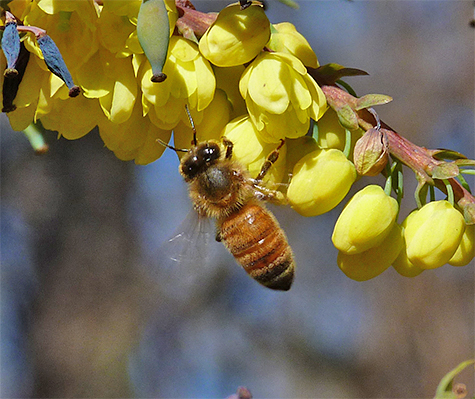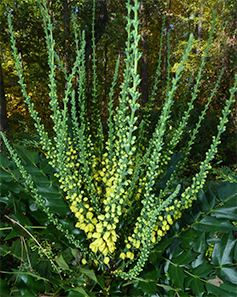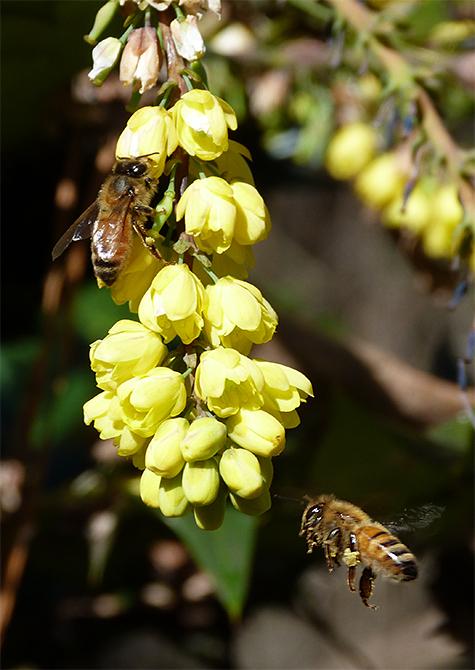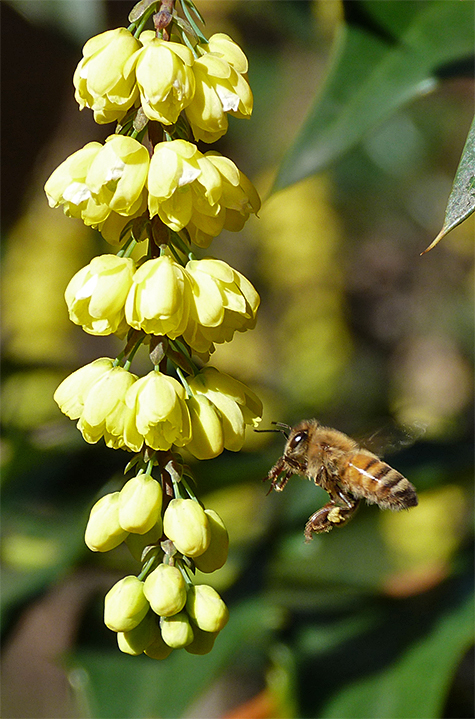Top Photo: Honey bee on algae covered rock in Hideaway Woods.
Starting in early November the Mahonia on our Dino Trail begins to bloom. Its tiny yellow flowers work their way up the plant’s long racemes. If there are any active insects about, here’s where you’ll find them, extracting nectar and, in the process, pollinating the plants.
There’s no real way of knowing (without marking them) if the honey bees that I see at the Mahonia at this time of year are from our hive in the Museum’s Insectarium, but it’s very likely that they are.
This year, the Mahonia blossoms are especially abundant in front of the Alamosaurus on the Dino Trail. Each time I walk by the long-necked dino, I give a quick look at the flowers for any active pollinators that might be present.

The blossoms start at the base of the raceme and work their way out to the tip.


Mahonia is native to the Pacific Northwest, as well as Asia. The genus name, Mahonia, derives from 1800s Philadelphia horticulturist Bernard McMahon who, by the way, was charged with receiving and growing the plants and seeds sent back by the Lewis and Clark expedition, which just happened to be to the Pacific Northwest.

The next time you pass these flowers, be sure to give a look to see if there are any bees hovering about.
Beautiful job shooting the Mahonia- yellow is a difficult color